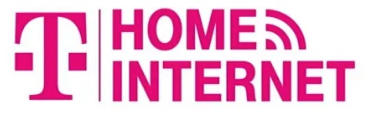
Everyone is in competition with each other for the Super Bowl, not just the players or fans, but the companies whose ads play during the game. While Verizon got Jim Carrey to reprise his role in the “The Cable Guy,” T-Mobile brought back “Scrubs” with actors Zack Braff and Donald Faison singing a duet – to the tune of “I Feel Pretty” – about how great its home internet services are. They also had some hilarious PSA-type ads with the great Dolly Parton, and Miley Cyrus, urging people to think of 5G phones.
Since the Super Bowl, T-Mobile has expanded its 5G home internet service in three states – Indiana, Kentucky and Ohio. This brings the carrier’s 5G Home Internet offering to 62 cities and towns across the three states, with coverage spanning nearly 5 million homes. Overall, T-Mobile says 30 million homes are eligible for its fixed wireless access (FWA)-based service across the country.
Wednesday’s announcement highlighted part of T-Mobile’s strategy to make FWA available in markets where there is little or no choice for traditional broadband. This would certainly give them an edge, if they can make it happen. According to T-Mobile, there are at least 3 million people in these three states who don’t have any access or only have one option for a broadband provider.
In a statement Kentucky State Representative Mary Beth Imes praised the expanded coverage effort, saying thousands more households now have access to unlimited high-speed internet.
“T-Mobile Home Internet has expanded access in Kentucky, bringing our state a real competitive option for broadband where many households are still left without any option or any good option,” Imes said.
In the announcement, Akron Mayor Dan Horrigan emphasized that T-Mobile’s expansion is helping to make broadband access more equitable.
“In Akron, families rely on home broadband now more than ever before,” he noted. “But throughout the pandemic, options for reliable connectivity have been lacking, and for some households, non-existent.”
T-Mobile is charging $50 per month for home internet, as long as you setup with autopay. They guarantee no added taxes or fees, price hikes, equipment costs or data caps. Just like Verizon’s 5G Home Internet, customers can self-install the gateway in what T-Mobile says is a 15-minute process.
T-Mobile is of course bringing in FWA subscribers mainly from more urban and suburban areas. These are generally areas that already have multiple options for broadband Internet. According to a recent Evercore report however, it’s suggested that areas with few options are where fixed wireless has some of the most potential. Overall, the firm found that fixed wireless speeds from different providers across the U.S. varied widely and that cable or fiber often delivered better performance.
“Outside of urban areas with millimeter wave, cable and fiber are able to offer a superior product to fixed wireless, and we expect that many of the fixed wireless net adds in rural areas will be households transitioning from DSL to fixed wireless where cable or fiber is not available,” Evercore stated.
With that being said, there was a report from New Street Research last month that noted when FWA additions from T-Mobile and Verizon are factored in (which totaled 302,000 combined), cable lost share of the overall broadband market in the fourth quarter of 2021.
“If this result holds, the last two quarters may be the first time Cable hasn’t taken share in well over a decade,” New Street’s Jonathan Chaplin wrote in a February note to investors.
T-Mobile ended last year with 646,000 home internet customers after adding 224,000 FWA subscribers in the fourth quarter. The carrier’s new goal is to increase its fixed wireless subscribers to 7 million to 8 million by the end of 2025. In comparison, Verizon added 78,000 FWA net additions last quarter, ending the year with a total of about 223,000.
Predictions from LightShed Partners came in last month for 2022, forecasting T-Mobile and Verizon would add 1.8 million wireless home broadband customers this year. This is more than double what they added in 2021. The firm noted spectrum depth as the key to speed and capacity carriers need to play competitively in this home broadband market.
“They have been spending tens of billions of dollars on this valuable asset and now they plan to deploy a ton of it,” wrote LightShed analysts in January.
Some analysts however, such as those at MoffettNathanson, see T-Mobile’s goal as more of a challenge.
“The math of acquiring 7-8M customers from an addressable pool of just 30M is daunting enough – it implies something between 23 and 30% penetration of addressable homes, an arguably absurdly ambitious target,” wrote MoffettNathanson analysts in a December report.
Part of the challenge MoffettNathanson highlighted relates to capacity and aligning FWA subscribers with cell sites or sectors that have the most available, as operators want to make sure more valuable mobile customers don’t have their experience hampered by FWA usage.
“It will be relatively easy to acquire FWA customers initially, when almost all cell site sectors are ‘open,’ but it will get harder and harder over time to match demand to precisely those pockets of supply where the network can safely tolerate loads of this magnitude,” Moffett noted.
Also important to note – T-Mobile places a cap on the number of FWA customers it will take on in addressable markets, and once it hits a certain threshold in an area, closes it off to new customers until someone drops the service.




